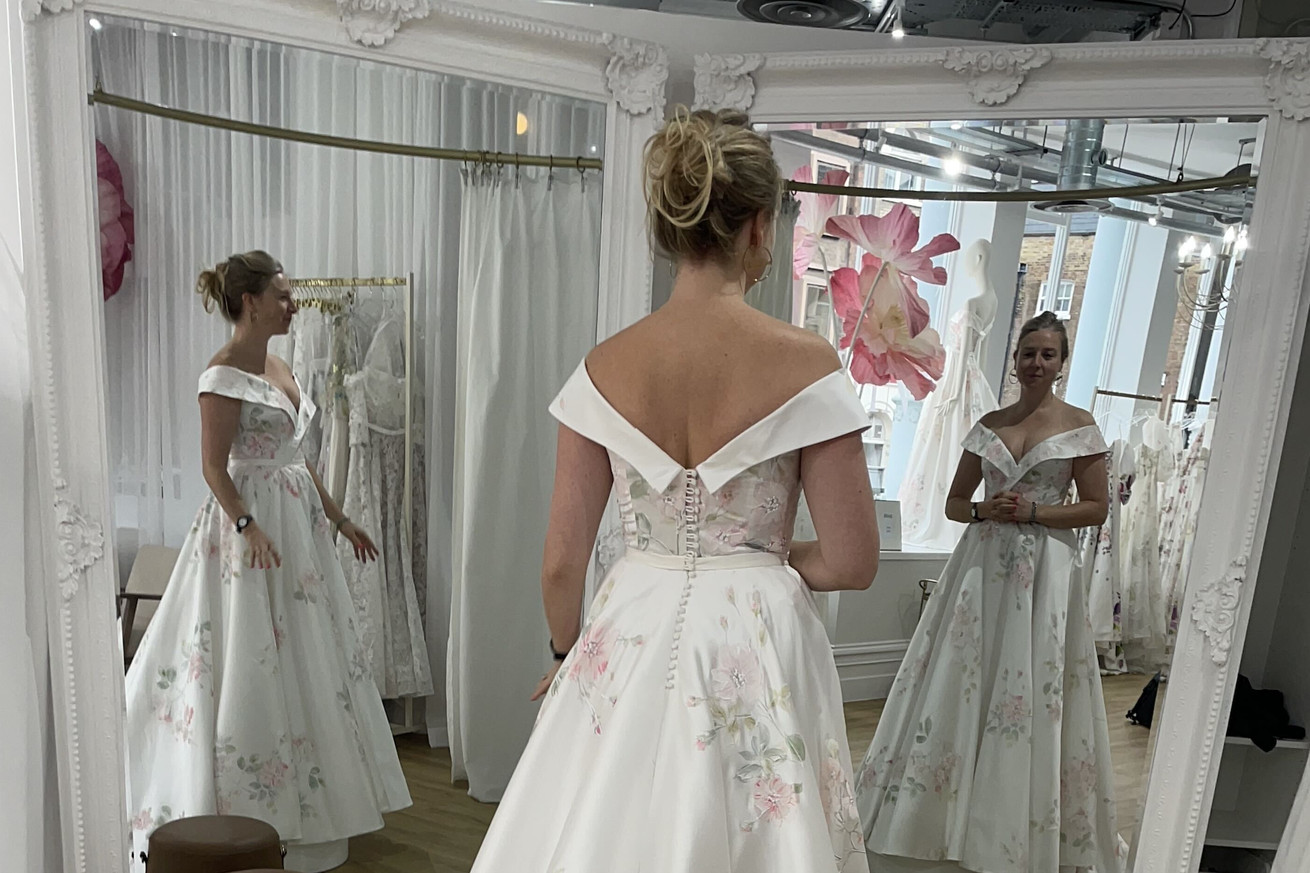This is decidedly not evidence of the existence of parallel realities. | Image: Tessa Coates / Crop: The Verge
Depending on how “online” you are, you may have seen a picture floating around socials with a strange quirk: a woman — comedian Tessa Coates — is standing in front of two mirrors in a bridal gown and, somehow, holding three poses at once. Coates insisted in her Instagram post that the picture wasn’t altered; it just came out that way.
So what happened? Was it a glitched iOS Live Photo (the iOS feature that takes short videos and picks out the best one)? A faked image manipulated with Photoshop? A brief glimpse into three different, parallel realities?
Nope, it’s simpler than all of that. Faruk from the iPhonedo YouTube channel posted a short video to Threads explaining exactly what happened, and it’s much more straightforward than you might expect.
It’s multiple images, stitched together using Coates’ iPhone 12’s “pano” feature. Faruk figured this out by peeking at the shot’s metadata and seeing its resolution is cropped from the main camera’s normal resolution down to 3028 x 3948, which happens when a picture is taken in panoramic mode.
The reason is to do with how panoramic shots on the iPhone work. When you take a picture in “pano” mode, the camera takes many pictures and stitches them together into one, wider photo. To keep the final image from being all wiggly, the phone has to crop them before the stitch, panning up, down, and across the original images to match them at the edges. The same principle is at play in digital video stabilization, producing smooth video from previously shaky footage.
That’s somewhat similar to the iPhone’s Deep Fusion computational photography feature, which compensates for dim lighting by taking several pictures at once within a fraction of a second and blends them together after processing them at the pixel level to pull out lighting, color, and tone detail. Then there’s Google’s bevy of AI photo-editing tools in the Pixel 8, which let you take several photos and swap out faces, tweak the background, or move whole people or things around to create the image you wanted rather than the one you took.
Stitching panoramic shots together isn’t as fancy as all that, and it isn’t perfect. Anyone who’s taken their share of panoramic iPhone shots can attest panoramics often result in wacky artifacts like missing arms and distorted faces. In Coates’ case, her phone’s camera took several pictures, and since it couldn’t know that the women in the mirrors were also Coates, it didn’t make sure to synchronize the poses. Faruk even manages to reproduce the phenomenon himself in his video. Shame, though. I had hoped we were actually seeing evidence of the multiverse.
Update December 2nd, 2023, 3:31PM ET: Added contextual information about computational photography and generative AI photo editing features from Apple and Google.



![[CITYPNG.COM]White Google Play PlayStore Logo – 1500×1500](https://startupnews.fyi/wp-content/uploads/2025/08/CITYPNG.COMWhite-Google-Play-PlayStore-Logo-1500x1500-1-630x630.png)